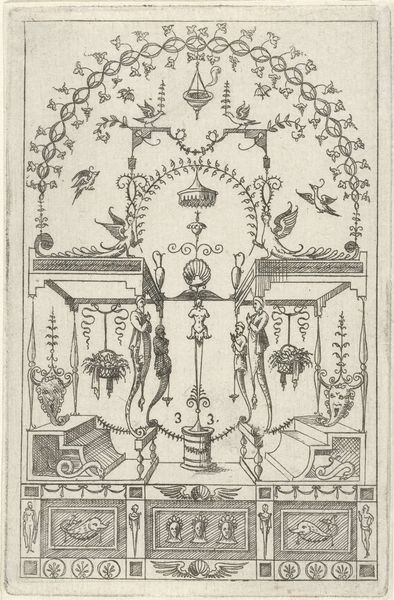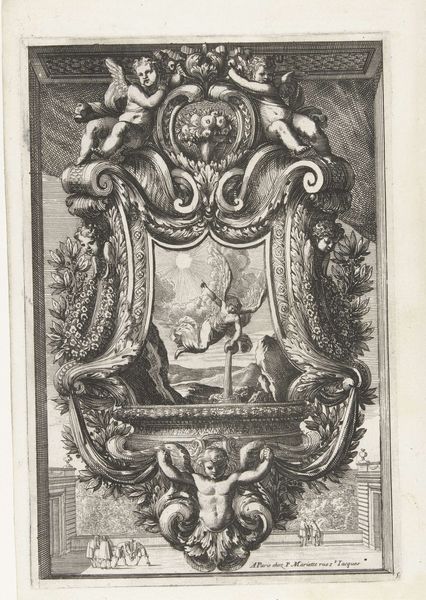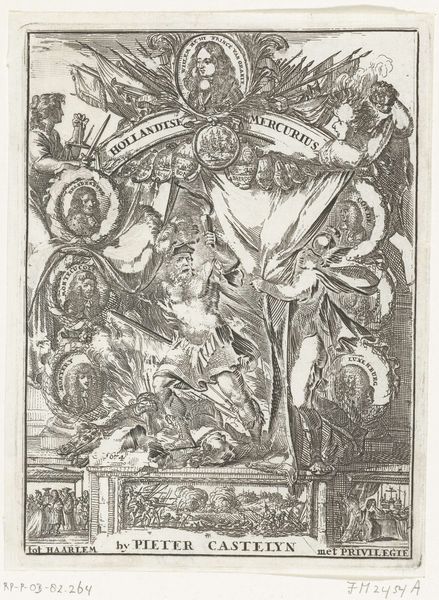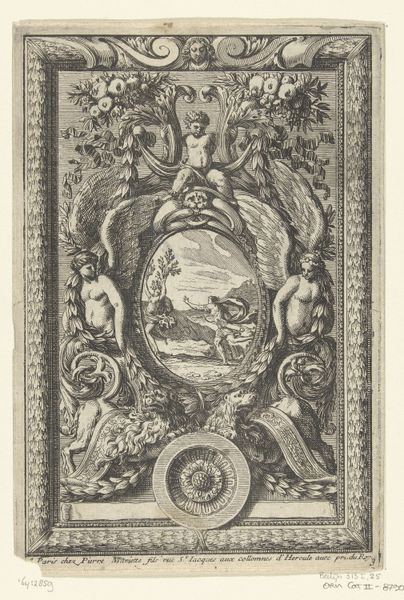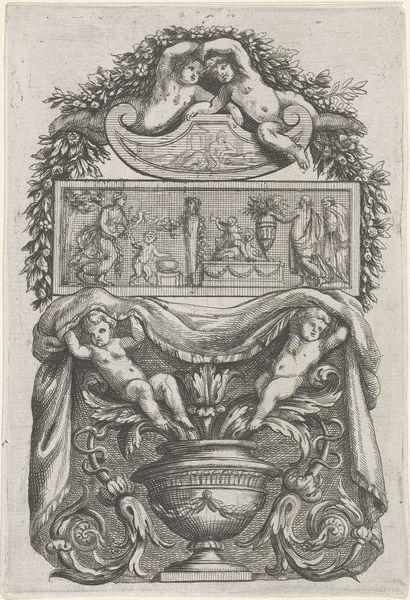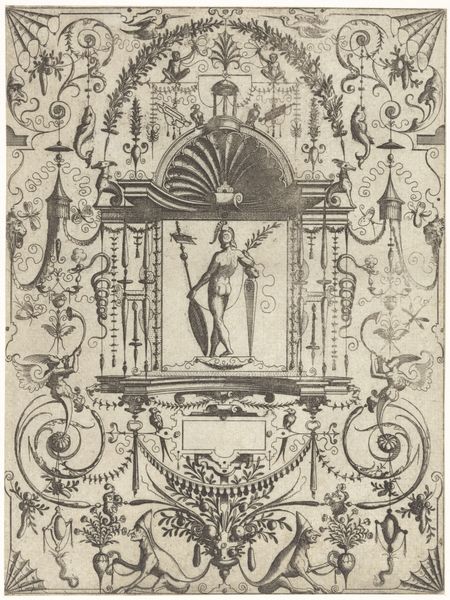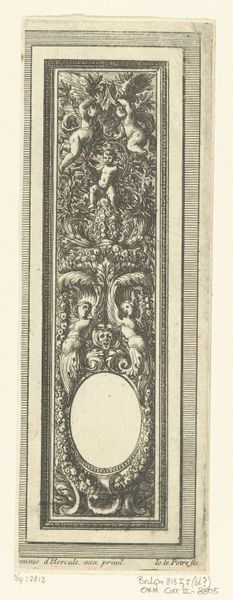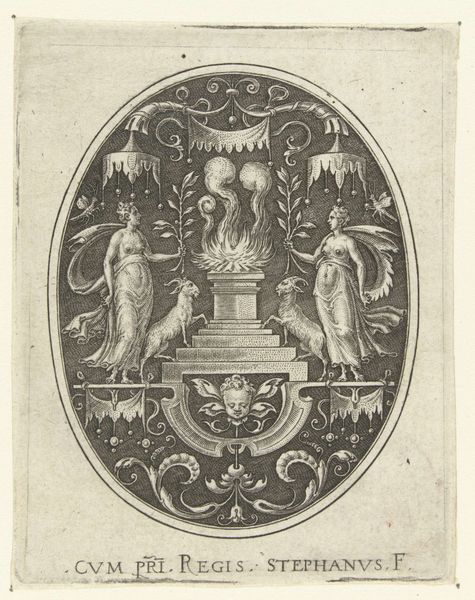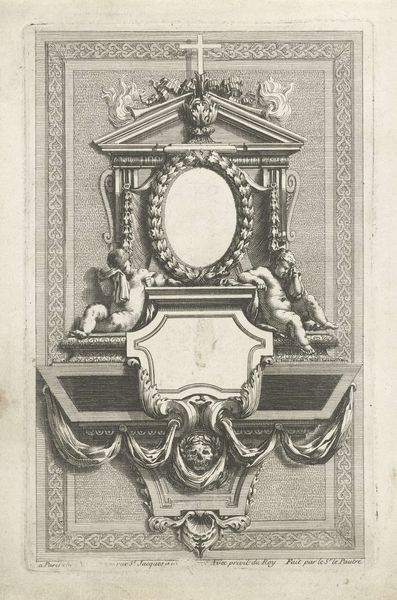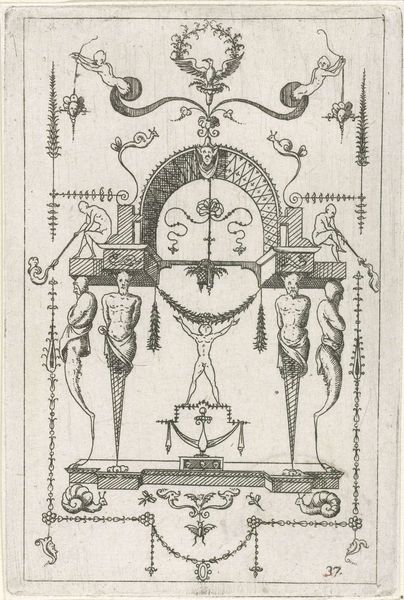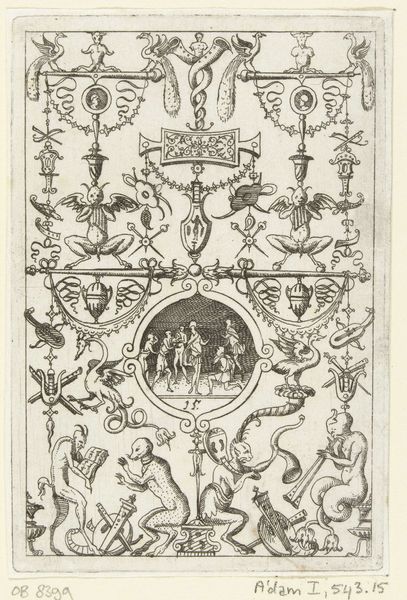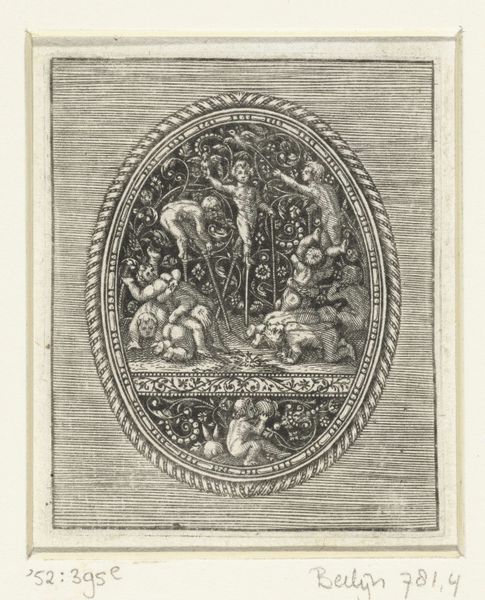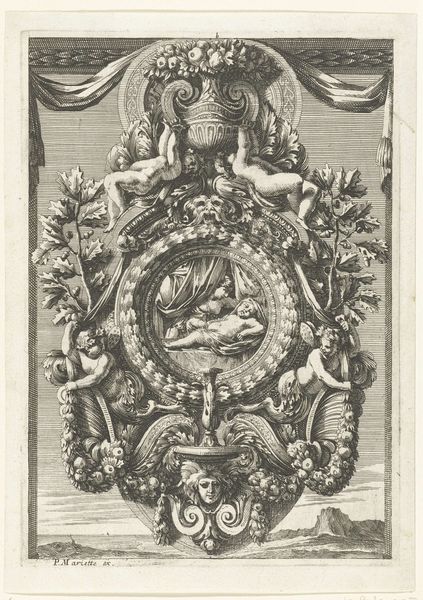
drawing, pen, engraving
#
drawing
#
allegory
#
baroque
#
pen drawing
#
crosshatching
#
pen-ink sketch
#
pen
#
history-painting
#
decorative-art
#
engraving
#
miniature
Dimensions: height 194 mm, width 130 mm
Copyright: Rijks Museum: Open Domain
Editor: Here we have Antoine Pierretz's "Panel in the Shape of a Clock," created in 1661 using pen and engraving. It has a very formal, ornate feel. I'm struck by the density of detail and the sheer amount of symbolism packed into one piece. What do you see in this work that speaks to you? Curator: I see a reflection of the baroque era's complex relationship with time, power, and representation. Think about it: clocks weren't just timekeepers; they were status symbols, often allegorical tools that elites used to control their own social image and manipulate time as a concept. This panel, with its decorative features, speaks volumes about the culture that produced and consumed such objects. Editor: So, it's not just a drawing of a clock; it’s making a statement? Curator: Precisely! Look at the cherubs— traditionally, cherubs evoked religion but also frivolity. Also, examine the historical context. Europe was in turmoil, with constant war between and within countries and new ways for monarchs to collect and hoard capital. This piece presents how the Baroque style acted as both decorum for higher society but simultaneously a call for their accountability. Editor: That is interesting. So the imagery isn't simply decorative but loaded with commentary about that time? Curator: Exactly. The artist’s intentions, the patron's desires, the social and political currents all are interwoven here, urging us to consider how art serves to represent and influence the power dynamics of the day. Even time is a social construct. What do you take away from this, now? Editor: I see it as less of a simple drawing and more as an active participant in a broader historical and social narrative, reflecting the baroque period's intricate dance between extravagance and critique. Thank you! Curator: Yes, this piece functions almost as a critical mirror of its time, encouraging us to reflect on the lasting power dynamics between art and society.
Comments
No comments
Be the first to comment and join the conversation on the ultimate creative platform.
